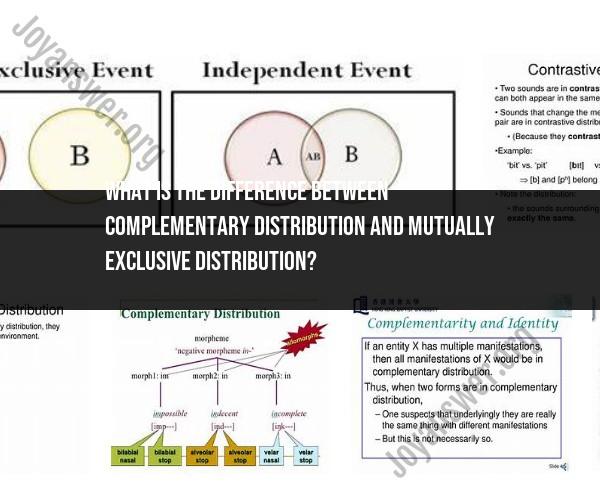What is the difference between complementary distribution and mutually exclusive distribution?
Complementary distribution and mutually exclusive distribution are two different concepts in statistics and probability theory, often used when describing events or outcomes. Here's the key difference between them:
Complementary Distribution:
- In a complementary distribution, two events or outcomes are related in such a way that they cover all possible outcomes of an experiment or situation.
- If event A and event B are complementary, it means that one of them must occur, and both of them cannot occur simultaneously.
- The probability of either event A or event B happening is equal to 1 (or 100%) because one of them is guaranteed to occur.
- Example: In a coin toss, getting heads (event A) and getting tails (event B) are complementary events because one of them must occur when you toss the coin.
Mutually Exclusive Distribution:
- In a mutually exclusive distribution, two events or outcomes are related in such a way that they cannot occur simultaneously; they do not overlap.
- If events A and B are mutually exclusive, it means that if one of them occurs, the other cannot.
- The probability of either event A or event B happening is less than or equal to 1 (or 100%) because they cannot both happen at the same time.
- Example: When drawing a card from a standard deck, getting a red card (event A) and getting a black card (event B) are mutually exclusive events because a card cannot be both red and black.
In summary, the main difference lies in the relationship between the events:
- Complementary events cover all possible outcomes, and one of them must occur.
- Mutually exclusive events cannot occur simultaneously, and only one of them can happen.
Understanding whether events are complementary or mutually exclusive is crucial in probability theory and statistics when calculating probabilities or making decisions based on the likelihood of specific outcomes.












